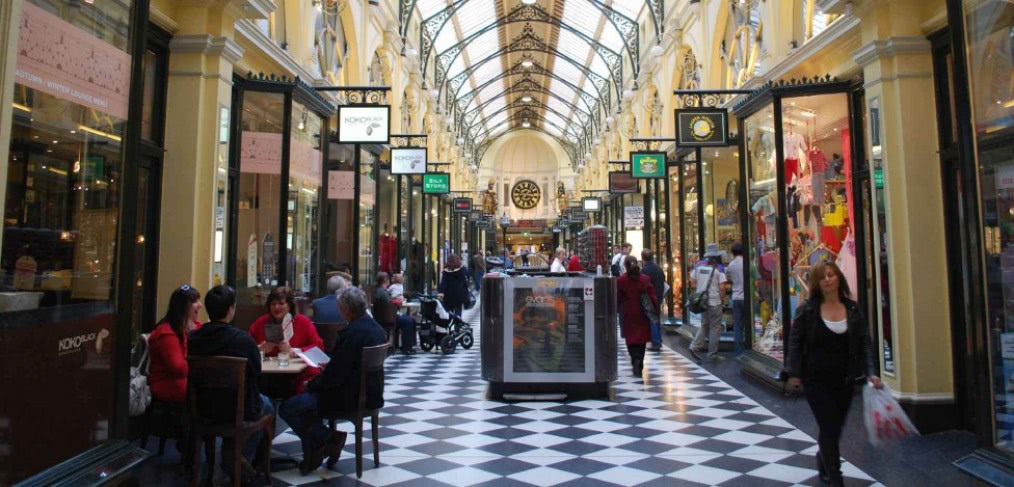
Retail Will Save the World
As the saying goes, the only thing that remains constant is change. The world around us is moving, shifting, changing at a pace unlike anything in our planet’s long history. Power is changing hands; Economies are rising and falling; Second World is mixing with First World and BRICs are giving way to MINTs.
But one thing in life remains true, no matter where in the world you might be. The exchange of goods on a daily basis, whether for subsistence or for pleasure, is an activity that drives the lifeblood of our communities. Retail forms the connective tissue linking our neighborhoods and districts. It is the glue that binds complex developments, and when artfully arranged, creates powerful commercial engines. When retail thrives, so do the economies that it connects.
Today’s global marketplace brings to focus a series of development and design trends that, when strategically understood, have the potential to enrich lives, create community and drive economic success. Here are five top design trends that are shaping retail projects around the globe.
Trend # 1: Vertical Shopping
In many parts of the world, shopping has gone from one level to two, then three. And as land values increase, the sky seems to be the limit for new shopping experiences. Urban density is driving centers ever higher, requiring strategic diagramming of use and circulation to ensure success all the way up.
In China, mixed-use developments are typically grounded by a strong retail podium, which can range anywhere from several stories to as many as 10 or 11 levels. A mix of varied experiences keep guests on their journey upward, from elaborate private cinema clubs to health centers and community facilities. Even in the US, a market that typically shuns vertical retailing, new projects like Westfield’s San Francisco Center are adding height to historically short retail.
Trend #2: Shopping in the Open
It’s always a little odd to say that shopping in open air zones is a new trend, especially when that’s how it’s been done for thousands of years. Perhaps that’s a reason why so many centers are returning to this tried and true format that feels honest and authentic, no matter the location. But from the cold climates of Northern China, to the warm and sultry regions of the Brazilian tropics, shoppers are happy to be outside, strolling down main streets, alleys, paseos and laneways. Outdoor venues are hot (both figurative and literally) and the public is fully embracing a break from all that air-con.
Trend #3: The Slow Food Revolution
No longer closeted in sub-level food courts, FB & E is front and center and often the first indicator of quality and experience at a retail destination. Once most retail centers were home to the ubiquitous “Food Court” which meant the usual offerings of hamburgers, bland imitations of ethnic food, deep fried anything, or branded fast food that you’d grab on your way to the sale of designer shoes at the local anchor store.
But fast is being chased out of the mall in favor of slow, or at the least, fast casual, which offers a vague invitation to stop awhile and enjoy a slightly more thoughtful meal. Food halls are now home to unique offerings, from gourmet chocolates to locally grown produce. The art of food display has created a niche in the market that didn’t exist 10 years ago, and few people now shop without spicing up their day with a yummy tidbit.
Trend #4: The Interactive Retail Experience
New technologies continue to influence shopping behaviors, and online activity has never been stronger. New apps provide more access, allowing people to shop anywhere, anytime. But the ever-present threat that traditional bricks and mortar retail venues might disappear seems to have softened. Instead, retail centers and stores are embracing the digital revolution in a way that seems to admit that it’s better to embrace the movement than to fight it. The notion of integration is driving new models as retailers seek to capture a segment of the market whose behavior unpredictable. Consumers today are both online and offline, and sometimes both…online while shopping offline.
The latest physical environments embrace new technologies in ways that allow them to be dynamic, interactive and responsive. LED lighting technology offers interesting façade treatments that are dialed up for events, down for everyday. Shoppers virtually interact with the store, merchandise, staff, and each other. It’s a brave new world out there, and soon our iPhones will be our lifeline to places, people and purchases.
Trend #5: Retail in Emerging Markets
In many parts of the world, an emerging middle class is driving shopping center development for a new generation of shoppers. These range from luxury projects catering to new wealth, to B-C malls that cater to the newly middle class. Emerging markets seem to be leapfrogging the learning curve of the developed world, adding new models, styles, designs and prototypes of retail centers with inspiring confidence. Authenticity still rules the day, and it seems that no matter where in the world we might be, we all long for a place that rings true to our heritage, our unique locations, our sense of selves. At the end of the day, retail environments still provide great spaces for us to gather, as they have for thousands of years.
In light of these trends that are influencing development around us, maybe it’s not so hard to believe that retail may, in fact, be just the thing to save the world!
Image via Flickr (avlxyz); Washingtonian Magazine

